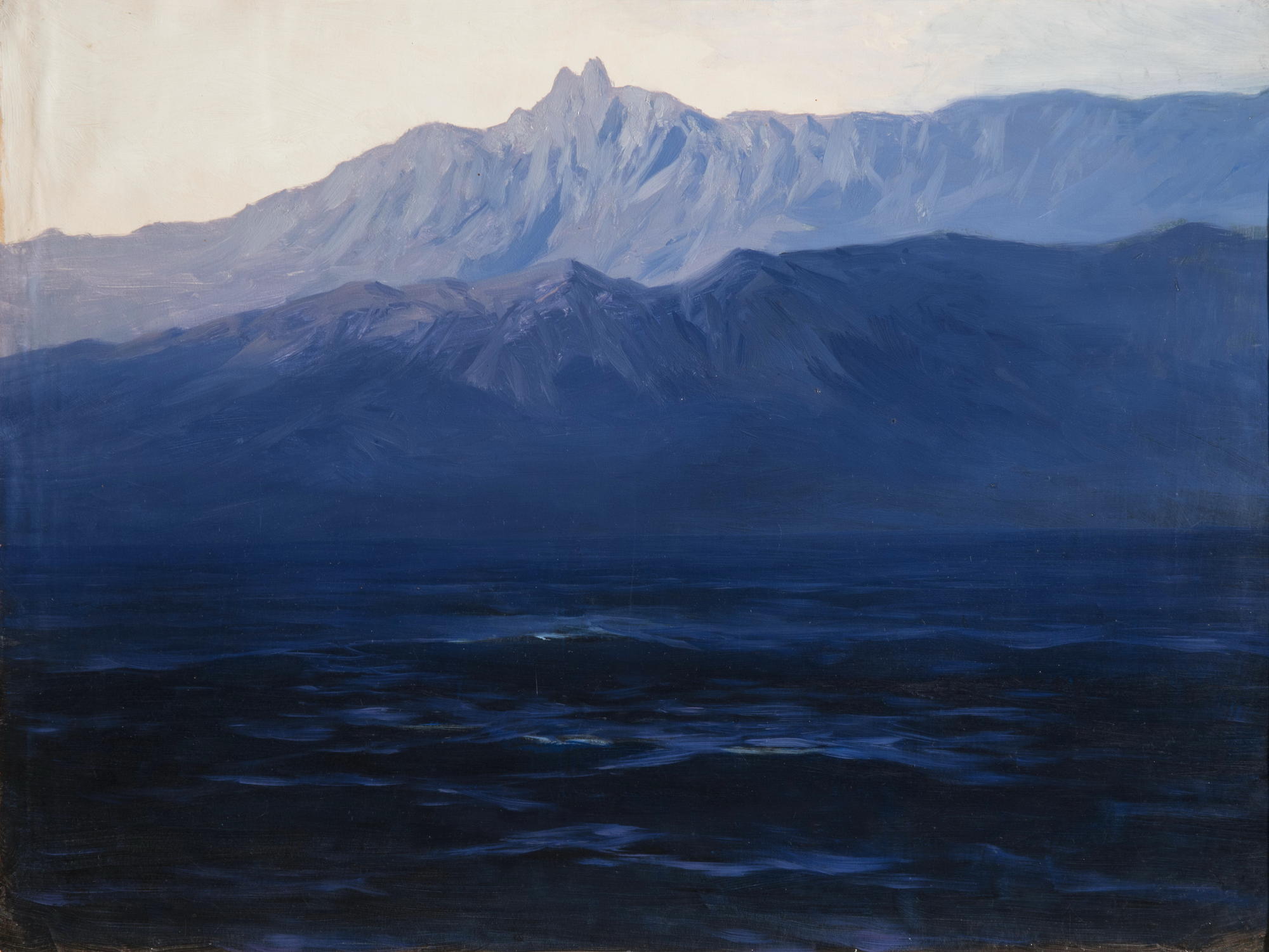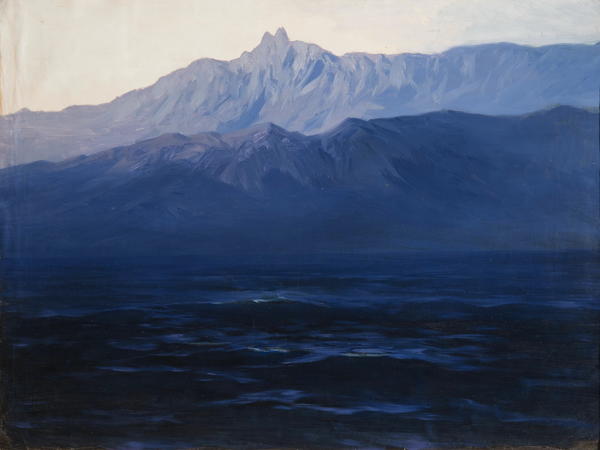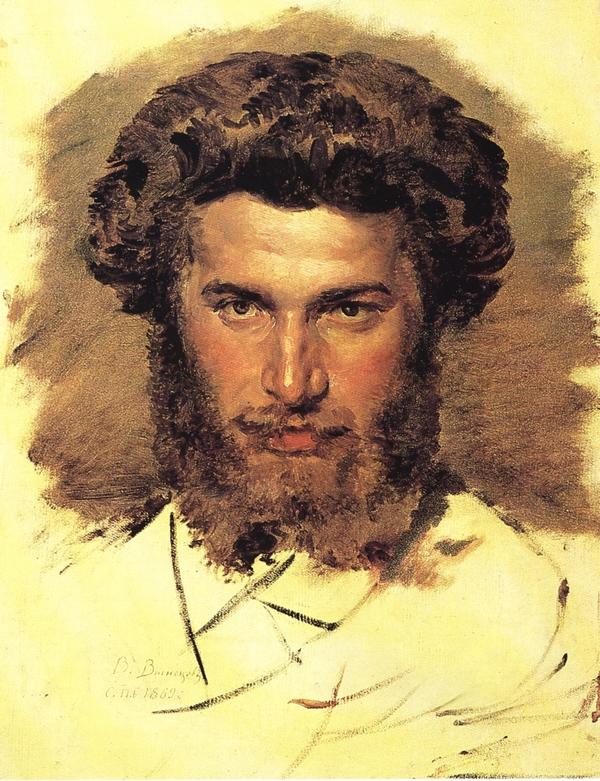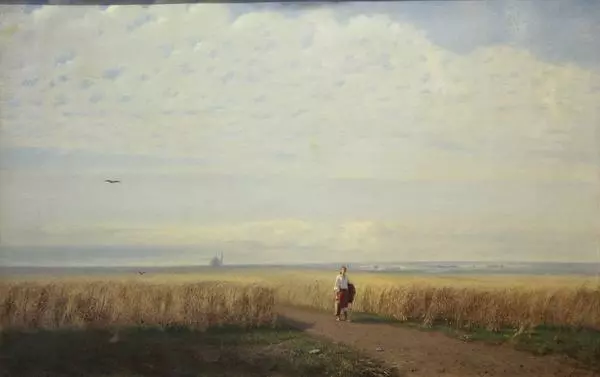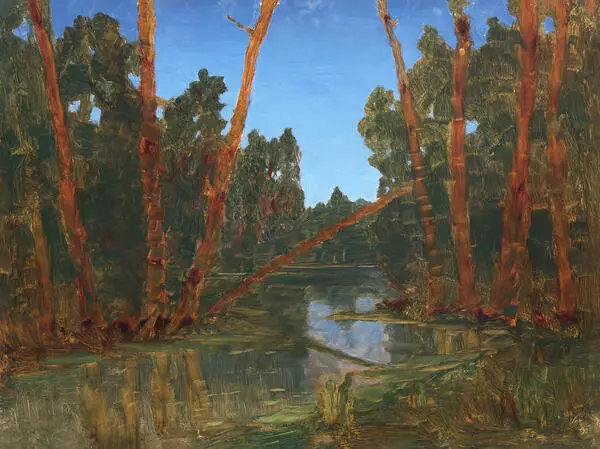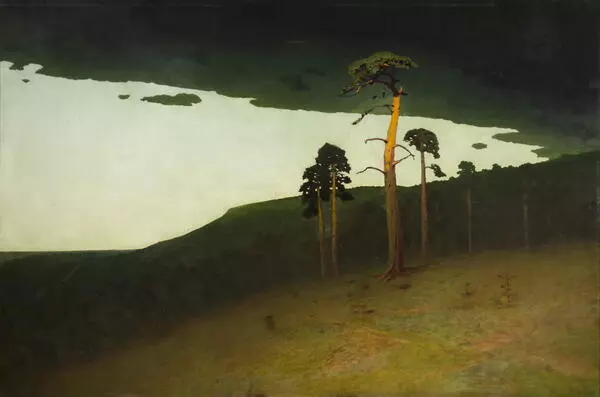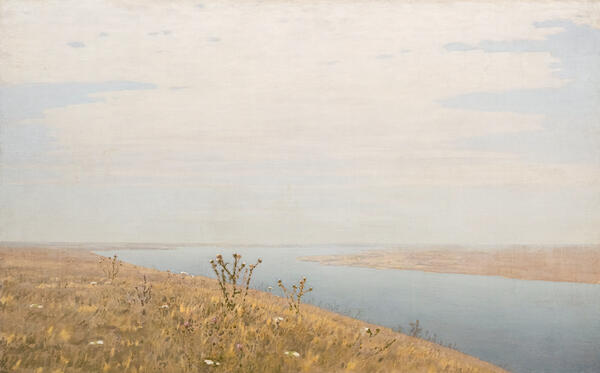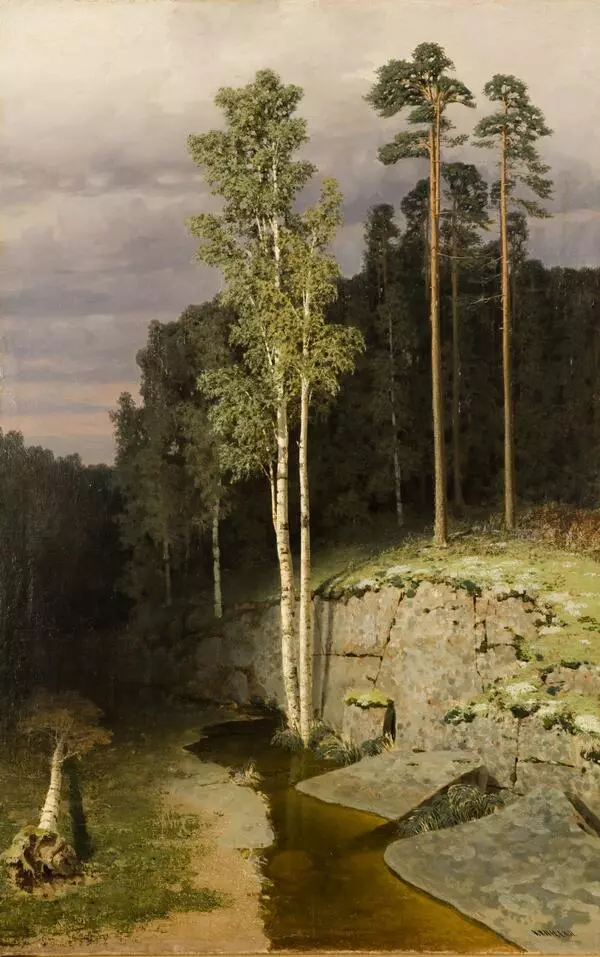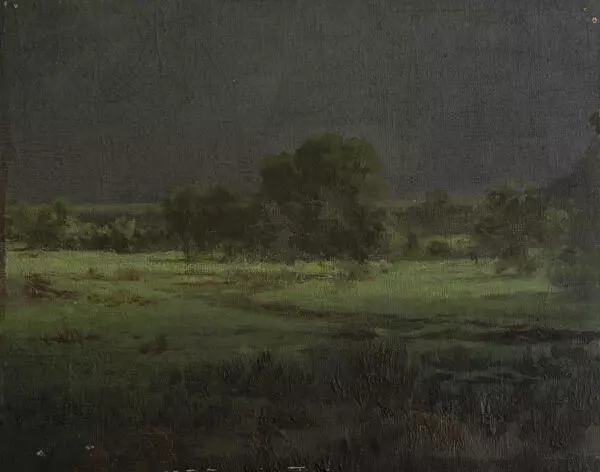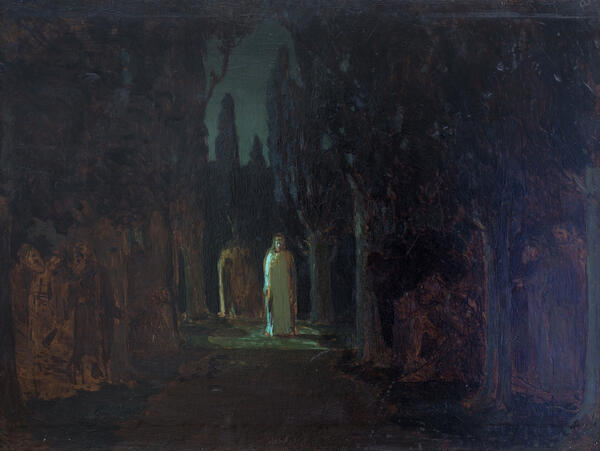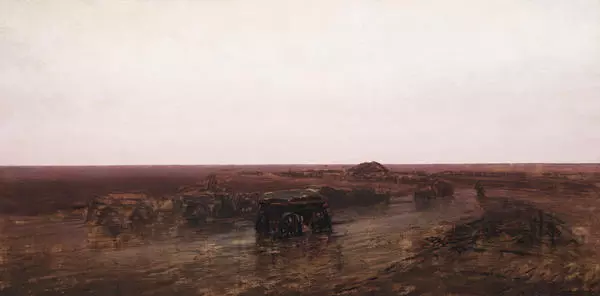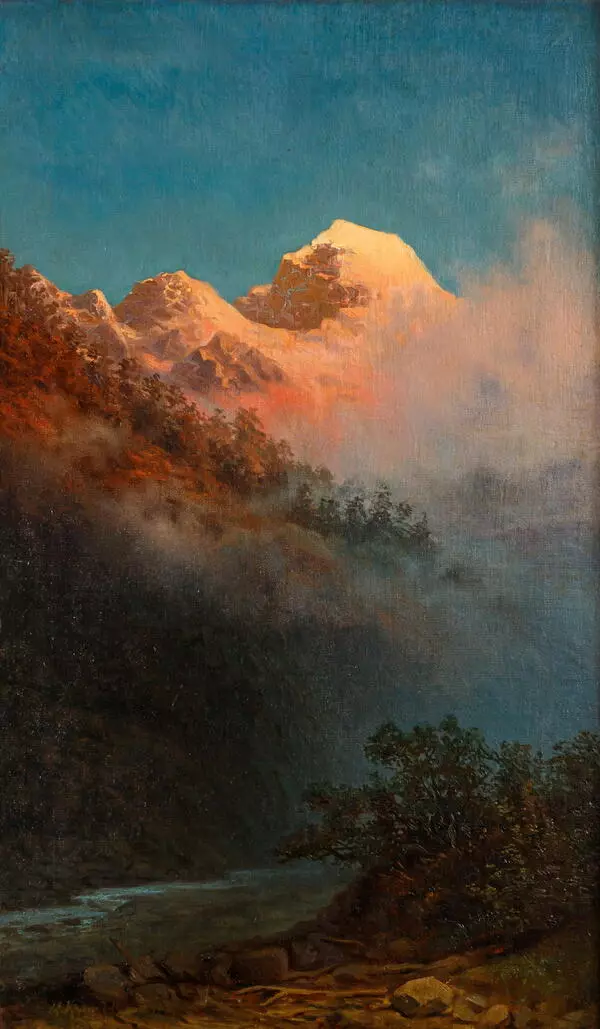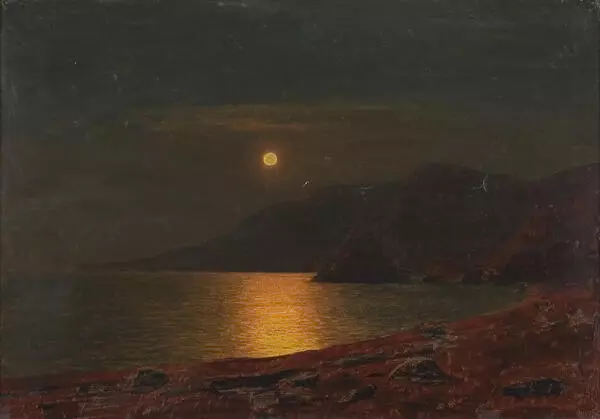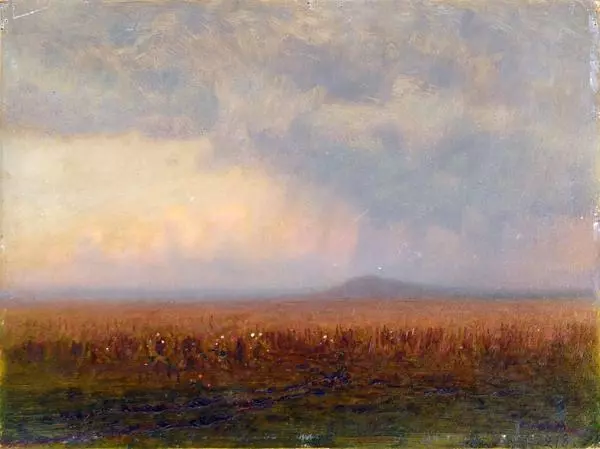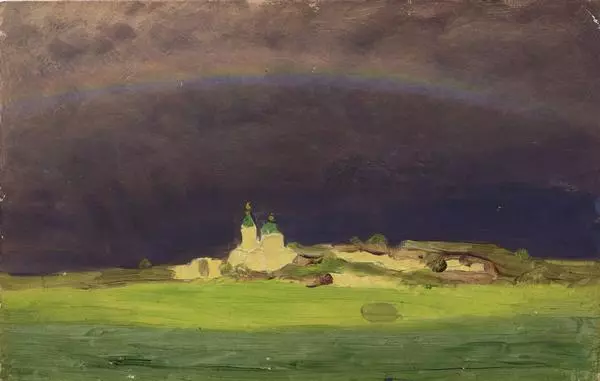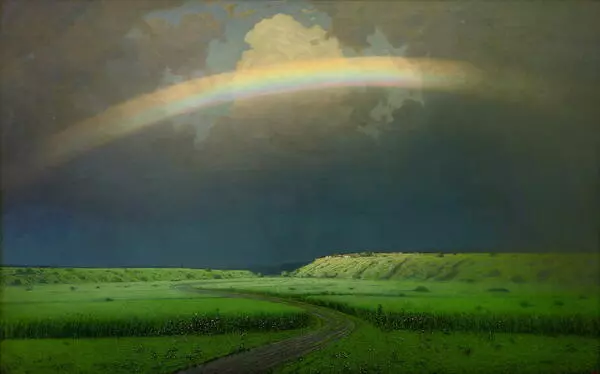In 1886, Arkhip Kuindzhi bought a big parcel of land with access to the sea in the Crimea. Later, he built a house here with a studio and a library, which he often visited with his apprentices — Nikolay Roerich, Arkadiy Rylov and Konstantin Bogayevsky. By that time, Kuindzhi was already a famous landscape painter and a professor at the St.-Petersburg Academy of Fine Arts.
Ay-Petri. The Crimea
Время создания
1890-s
Размер
39x53 cm
Техника
Paper on canvas, oil painting
Коллекция
95
Открыть в приложении#1
Arkhip Kuindzhi
Ay-Petri. The Crimea
#2
#4
It was here, in his small estate on the Back Sea coast, that he created a painting Ay-Petri. The Crimea. Noteworthy, the artist depicted the Ay-Petri mountain as if looking at it from the sea, as if he was standing on a ship deck or even flying in the sky. The painter seldom reproduced life on canvas thoroughly: he was always experimenting with the composition, perspective and color.
#10
In this piece, Kuindzhi used a cold color palette. Very elaborately he painted the transition from intense deep-blue color of the sea in the foreground to the light-blue transparent tone of the sky. Thanks to this effect, the viewers immediately get focused on the prominent mountain top.
Ay-Petri Mountain. Source: commons.wikimedia.org, author — Batchev Alexander.
#6
The exact date of creating this piece is unknown. In early 1880-s, being at the peak of success, the artist all of a sudden retreated to a voluntary reclusion. He seized exhibiting his work, closed his studio (previously open for his apprentices, colleagues and for the willing public).
At the same time, Kuindzhi continued to paint a lot. Almost 30 years of working in privacy became the period of reflection, findings and color experiments for the artist. The general public got to see hundreds of his paintings only after his death. Ay-Petri. The Crimea was one of them.
#7
It was due to the memoirs of the artist’s wife and on-going work of Arkhip Kuindzhi’s Society (founded by the artist in 1909 to support young painters) that systematization of all those pieces became possible.
#8
In 1930, Arkhip Kuindzhi’s Society granted Ay-Petri. The Crimea to the Russian Museum as a present. The initial plan was to grant it to the museum of fine arts in Mariupol, the hometown of the artist. But World War I and later the civil war prevented the Society from doing that.
Not only did this painting survive through several wars. In February 2019, during the Arkhip Kuindzhi exhibition in the State Tretyakov Gallery in Moscow, this piece was stolen. In the middle of the exhibition day, the thief took the canvas out of the frame and within the sight of numerous visitors carried it out of the building. However, on the next day he got arrested and the painting was retrieved.
#9
Arkhip Kuindzhi was born near the city of Mariupol. Since his childhood, the beauty of his land inspired him: the steppe, the sea and the mountains. Therefore, it was not a coincidence for him to be enrolled in the class of Ivan Aivazovsky in the Crimea. He was not able to learn directly from the master, though, but he admired the views every day. In addition to the southern views, the artist depicted rough northern landscapes of Valaam and Ladoga, as well as Swiss mountains. Kuindzhi created a special type of romantic scenery.
The Portrait of the Artist A.I. Kuindzhi, Victor Vasnetsov. 1869, canvas, oil painting. The State Tretyakov Gallery
#11
State Russian Museum
читать дальшескрыть
00:00
00:00
1x
Ay-Petri. The Crimea
Время создания
1890-s
Размер
39x53 cm
Техника
Paper on canvas, oil painting
Коллекция
95
Открыть в приложении
Поделиться
